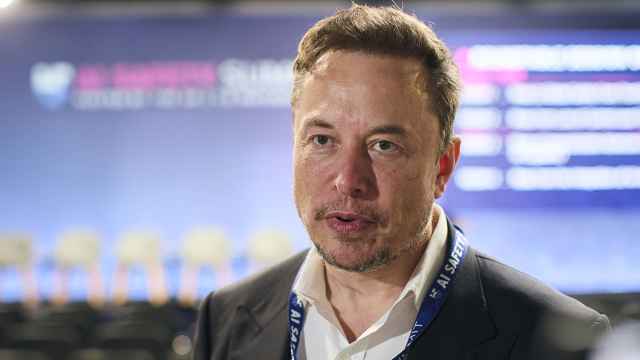Not much has changed to the original prediction that the BRIC economies will make up four of the five largest economies in the world by 2050 when measured in dollar terms (South Africa has since been added to the moniker to make BRICS) — except, if anything, the process has gone faster than expected, partly because the broader emerging market universe is starting to contribute to the process too.
"China was already in second place in 2010, but Brazil is projected to move from 7th place in 2010 to 4th place in 2050, Russia from 11th to 5th place and India from 10th place to 3rd place. On these revised projections, we would expect the Chinese economy to surpass the US in 2026, and the BRICs together to surpass the US in 2015 and the G7 in 2032," Goldman analysts Dominic Wilson, Kamakshya Trivedi, Stacy Carlson and José Ursúa said in a decennial paper released at the end of last year.
Indeed, in March it was revealed that Brazil in 2011 claimed the U.K.'s spot as the world's sixth largest economy, and now lies behind the U.S., China, Japan, Germany and France.
The BRIC's share of global GDP has already increased from 11% in 1990 to around 25% today, and Goldman expects that by 2050 the BRICs will have reached close to 40% of global GDP (with the broad emerging markets reaching 73%). "So, on the GDP measure, the 'Great Transformation' is only halfway done," the Goldman analysts said.
Where things have changed most notably is in the BRIC share of growth. This part of the transformation has already almost matured. Goldman said the next decade will probably see the peak in global growth, after which the BRICs will come off their frenetic pace and glide down to convergence with the rest of the world.
The bank predicts global growth to 2020 will be 4.3% (the same as Russia's projected growth over the period), which is a lot higher than the rate of growth expected in developed markets and also faster than the global economy has ever grown before. That's good news for Russia and Brazil, as the fast pace of growth is likely to keep commodity prices high, but it will also create problems for all these economies, as policy and good government will become increasingly important once the easy gains of catch-up begin to evaporate. "Over the past decade, the BRICs have contributed close to half of the world's growth and emerging markets more than 70%. This is more than double the BRIC's contribution in the 1990s (23%) and the 1980s (18%), with a similar shift in the broad emerging market contribution too," the Goldman analysts said. "But simply in terms of the role of the BRICs in driving global growth, the most dramatic change is behind us… Even as the BRIC economies continue to increase steadily their share of global GDP, their contribution to global growth is unlikely to rise much further."
Countries like Russia and Brazil are already middle-income countries. This is an important change, as it highlights the conclusions economists have been coming to at a national level: the time for "big push" state spending is coming to an end and governments need to switch to "nurturing" private enterprises. Goldman predicts that over the next 20 years, the contribution to global growth will fall steadily until it reaches a steady state of about 40% of the total.
The slowing of growth will be key for leaders like Russia's Vladimir Putin, who will soon be starting his third term as president.
In early February, Renaissance Capital's chief economist Ivan Tchakarov warned that Russia would hit a "middle-income trap" as soon as 2014. "Fast growing economies eventually slow down as their easy catch-up productivity gains (relative to developed economies) are gradually exhausted," Tchakarov said in a note. "Fast-growing economies appear to start facing the middle-income trap when their GDP per capita levels reach around $16,000 in constant 2005 international prices… which Russia will reach in 2014… China will hit the middle-income trap only in 2020, Brazil in 2024 and India in 2038."
Putin was gifted with easy growth and high oil prices in his first two tours of duty, during which minimal reforms produced spectacular gains. But now the going will get harder and he will have to deliver on many of the policies he outlined in his election articles published this year. Without real reforms, Russia faces the prospect of stagnation. The key number to watch for is a shift in the long-term investment/GDP ratio from 20% now to 25% or more as a first step of avoiding the middle income trap.
The Expanding Middle
At the most basic level, the rise of the BRICs means that their people are becoming richer. There has been a lot of talk about income inequality recently and while the enormous opportunities have created a new generation of super-rich oligarchs in most of the countries in transition, inequalities across countries have actually been falling.
Moreover, as this process continues, the inequality inside the countries should fall, too, as the middle class begins to overtake the oligarchs in importance — just as Russian president-elect Putin has been finding out in recent months. This story is what Goldman calls the "Expanding Middle" and it sees no let-up in the spreading midriffs of most emerging markets over the next couple of decades.
In terms of absolute gains in income, there is still a huge amount of catch-up to do. Russia and Brazil are likely to see incomes rise another six-fold and four-fold respectively between 2010 and 2050, but the poorer countries of China and India will see even bigger gains: nine-fold and 12-fold respectively, reckons Goldman.
Still, even these enormous gains are not enough to bring equality to the globe, as incomes in the BRICs will remain a fraction of US per-capita incomes even in 2050, whether measured in absolute or purchasing-power-parity terms. "This underscores the point we also emphasized in our very first BRIC projections: the process of income convergence takes a long time," the Goldman analysts pointed out.
A Message from The Moscow Times:
Dear readers,
We are facing unprecedented challenges. Russia's Prosecutor General's Office has designated The Moscow Times as an "undesirable" organization, criminalizing our work and putting our staff at risk of prosecution. This follows our earlier unjust labeling as a "foreign agent."
These actions are direct attempts to silence independent journalism in Russia. The authorities claim our work "discredits the decisions of the Russian leadership." We see things differently: we strive to provide accurate, unbiased reporting on Russia.
We, the journalists of The Moscow Times, refuse to be silenced. But to continue our work, we need your help.
Your support, no matter how small, makes a world of difference. If you can, please support us monthly starting from just $2. It's quick to set up, and every contribution makes a significant impact.
By supporting The Moscow Times, you're defending open, independent journalism in the face of repression. Thank you for standing with us.
Remind me later.





